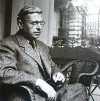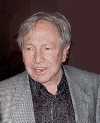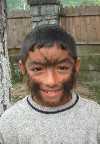 Just two years after an explosion killed 39 miners in Springhill, Nova Scotia, Canada, the most severe “bump,” or underground shockwave, in North American mining history devastated the mining town again. Of the 174 miners in the mine at the time of the collapse, 100 were rescued by draegermen—rescue miners—who spent days trying to make contact with those below. Seventy-four miners were killed in the tragedy. Why were the bodies of the dead removed from the mine in airtight aluminum coffins? Discuss
Just two years after an explosion killed 39 miners in Springhill, Nova Scotia, Canada, the most severe “bump,” or underground shockwave, in North American mining history devastated the mining town again. Of the 174 miners in the mine at the time of the collapse, 100 were rescued by draegermen—rescue miners—who spent days trying to make contact with those below. Seventy-four miners were killed in the tragedy. Why were the bodies of the dead removed from the mine in airtight aluminum coffins? Discuss
Source: The Free Dictionary
 In
In  Larousse was a French publisher, lexicographer, and encyclopedist. In 1852, he founded a publishing house called Librairie Larousse, producing textbooks, grammar books, and dictionaries, but his major work, reflecting his desire “to teach everyone about everything,” was the combined dictionary and encyclopedia Grand dictionnaire universel du XIXe siècle, or Great Universal 19th-Century Dictionary, which took more than 10 years to complete. Who finished it after Larousse’s death?
Larousse was a French publisher, lexicographer, and encyclopedist. In 1852, he founded a publishing house called Librairie Larousse, producing textbooks, grammar books, and dictionaries, but his major work, reflecting his desire “to teach everyone about everything,” was the combined dictionary and encyclopedia Grand dictionnaire universel du XIXe siècle, or Great Universal 19th-Century Dictionary, which took more than 10 years to complete. Who finished it after Larousse’s death?  In 1770, Wolfgang von Kempelen unveiled his Mechanical Turk, a chess-playing automaton. Dressed in a cloak and turban and seated behind a chessboard, the mannequin played chess and executed complex mathematical puzzles. The Turk performed before numerous world leaders before it was revealed to be a hoax; the cabinet beneath the chessboard, which housed the internal mechanism, actually hid a chess master who secretly operated the machine. Which French Emperor was defeated by von Kempelen’s Turk?
In 1770, Wolfgang von Kempelen unveiled his Mechanical Turk, a chess-playing automaton. Dressed in a cloak and turban and seated behind a chessboard, the mannequin played chess and executed complex mathematical puzzles. The Turk performed before numerous world leaders before it was revealed to be a hoax; the cabinet beneath the chessboard, which housed the internal mechanism, actually hid a chess master who secretly operated the machine. Which French Emperor was defeated by von Kempelen’s Turk?  A French philosopher, playwright, and novelist, Sartre was a leading exponent of 20th-century existentialism. His works examine man as a responsible but lonely being, burdened with a terrifying freedom to choose, adrift in a meaningless universe. He served in the army during World War II, was taken prisoner, escaped, and was involved in the resistance, writing his first plays during the occupation. After the war, his writings became increasingly influential. Why did he refuse the Nobel Prize?
A French philosopher, playwright, and novelist, Sartre was a leading exponent of 20th-century existentialism. His works examine man as a responsible but lonely being, burdened with a terrifying freedom to choose, adrift in a meaningless universe. He served in the army during World War II, was taken prisoner, escaped, and was involved in the resistance, writing his first plays during the occupation. After the war, his writings became increasingly influential. Why did he refuse the Nobel Prize? 
 One of contemporary American art’s most prolific and influential figures, Rauschenberg was a painter whose three-dimensional collages, known as “combines,” incorporated objects—such as soda bottles and stuffed birds—and anticipated the emerging pop art movement, of which he became a pivotal figure. He later used silk-screening to transfer images from print media to canvas. What did Rauschenberg submit to a gallery exhibition for which artists were asked to create portraits of the gallery owner?
One of contemporary American art’s most prolific and influential figures, Rauschenberg was a painter whose three-dimensional collages, known as “combines,” incorporated objects—such as soda bottles and stuffed birds—and anticipated the emerging pop art movement, of which he became a pivotal figure. He later used silk-screening to transfer images from print media to canvas. What did Rauschenberg submit to a gallery exhibition for which artists were asked to create portraits of the gallery owner?  Hypertrichosis, commonly known as “Werewolf syndrome,” is an extremely rare condition that results in the excess growth of body hair. The syndrome can be generalized across the body or localized to a specific area and ranges from mild to severe. Hypertrichosis is believed to result from genetic factors and is rarely found in its severe form. Those who are strongly affected often display excessive, animal-like hair on the face and body. What is the cure for congenital hypertrichosis?
Hypertrichosis, commonly known as “Werewolf syndrome,” is an extremely rare condition that results in the excess growth of body hair. The syndrome can be generalized across the body or localized to a specific area and ranges from mild to severe. Hypertrichosis is believed to result from genetic factors and is rarely found in its severe form. Those who are strongly affected often display excessive, animal-like hair on the face and body. What is the cure for congenital hypertrichosis?